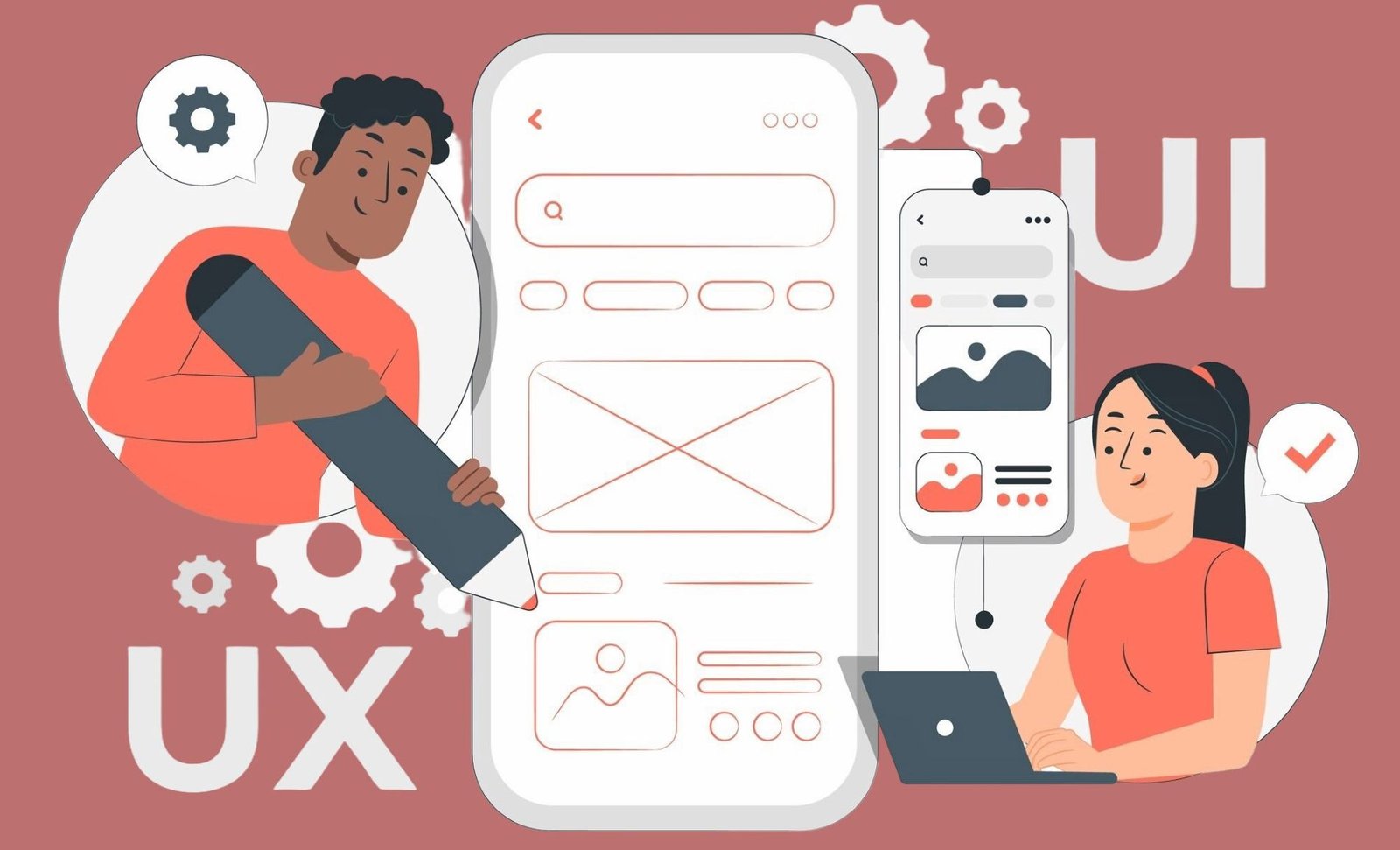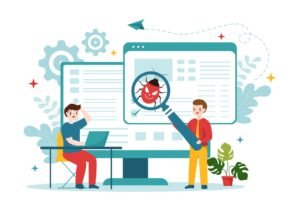Usability testing is a crucial step in the design and development process that ensures your product is user-friendly and meets the needs of your target audience. By observing real users as they interact with your website, app, or software, you can identify pain points, improve user experience, and enhance overall satisfaction.
Imagine launching a brand-new app after months of hard work. Your team is excited, and you believe everything is perfect. But as users start interacting with the app, complaints start pouring in—buttons are hard to find, navigation is confusing, and users abandon it within minutes. What went wrong?
This is where usability testing becomes essential. It helps businesses identify user pain points before a product goes live, ensuring a seamless experience. In this page, we’ll take you through a step-by-step process to conduct usability testing effectively.
On This Page
Table of Contents
1. What is Usability Testing?
Usability testing is a method of evaluating a product by testing it with real users. The goal is to observe how users interact with the product, identify usability issues, and improve the user experience (UX).
Why is Usability Testing Important?
- Helps identify design flaws early
- Improves user satisfaction and engagement
- Reduces development costs by fixing issues before launch
- Enhances conversion rates and retention
When Should You Conduct Usability Testing?
| Stage | Purpose of Testing |
|---|---|
| Early Prototyping | Identify fundamental usability issues |
| Pre-Launch | Ensure the product is user-friendly |
| Post-Launch | Continuous improvement based on feedback |
2. Types of Usability Testing
Usability testing is not one-size-fits-all. Here are the different types:
| Testing Type | Description | Best For |
|---|---|---|
| Moderated | A facilitator guides users during the test | Deep insights and explanations |
| Unmoderated | Users test the product without direct supervision | Large-scale, quick testing |
| Remote | Conducted online without physical presence | Testing users from different locations |
| In-Person | Conducted in a controlled environment | Gathering detailed observations |
| Qualitative | Focuses on user behavior and experience | Understanding user frustrations |
| Quantitative | Gathers numerical data, like task success rates | Measuring usability metrics |
3. Preparing for Usability Testing
Before you begin usability testing, preparation is key. Here’s what you need to do:
Define Clear Objectives
Ask yourself:
- What specific aspects of the product do we want to test?
- Are we testing navigation, user comprehension, or ease of use?
Identify Your Target Users
Selecting the right participants is crucial. Consider:
- User demographics (age, gender, tech-savviness)
- Behavioral traits (frequent users vs. new users)
Choose the Right Testing Method
Based on your goals and budget, select a testing type (moderated, unmoderated, remote, etc.).
4. Creating Test Scenarios and Tasks
The success of usability testing depends on well-designed test tasks. Keep them realistic and goal-oriented.
How to Write Effective Tasks?
- Use real-life scenarios (e.g., “You want to buy a book on our website. How would you do it?”)
- Avoid leading users (e.g., “Click on the blue button” is too direct)
- Keep tasks short and clear
5. Recruiting Participants
Your test results depend on the quality of your participants. Here’s how to find them:
Where to Recruit Users?
| Source | Pros | Cons |
|---|---|---|
| Existing Customers | Relevant audience | May already know the product |
| Social Media | Broad reach | May attract the wrong demographic |
| User Testing Platforms | Quick access to testers | Costs involved |
Ethical Considerations
- Provide clear instructions
- Offer incentives if necessary
- Obtain consent before recording sessions
6. Setting Up the Testing Environment
A well-prepared test environment ensures reliable results.
Tools and Software for Usability Testing
| Category | Examples |
|---|---|
| Screen Recording | Loom, UserTesting |
| Analytics | Google Analytics, Hotjar |
| Prototyping | Figma, Adobe XD |
Ensure a distraction-free setting for in-person tests and stable internet for remote tests.
7. Conducting the Usability Test
During the session:
- Encourage users to think aloud
- Observe navigation patterns and hesitations
- Take notes on difficulties
If it’s a moderated test, avoid helping users too soon—let them struggle a bit to see their natural reactions.
8. Collecting and Analyzing Data
Usability testing isn’t just about observing—it’s about extracting insights.
Data Collection Methods
| Method | Usage |
|---|---|
| Video Recordings | Analyze user behavior post-test |
| Heatmaps | Understand click patterns |
| Surveys | Gather subjective feedback |
Key Metrics to Analyze
- Task completion rate
- Time taken to complete tasks
- Error rates
9. Interpreting Results and Prioritizing Fixes
Once data is collected, categorize issues based on severity:
| Severity Level | Action Needed |
|---|---|
| High (Critical) | Immediate fix required |
| Medium | Should be fixed before launch |
| Low | Fix if resources allow |
10. Implementing Changes and Retesting
After fixing the issues, conduct another round of usability testing to validate improvements.
Best Practices for Retesting
- Use new participants to avoid bias
- Keep test conditions consistent
- Compare results with previous tests
WrapUP
Usability testing is an ongoing process, not a one-time task. By systematically testing and refining your product based on real user feedback, you can:
- Enhance usability and engagement
- Reduce friction in user interactions
- Improve overall satisfaction
Remember, a user-friendly product isn’t built overnight—it’s shaped by continuous testing and iteration. So, start testing today and build products that users love! 🚀

FAQs
What is the main goal of usability testing?
The primary goal of usability testing is to evaluate how easily users can interact with a product, identify usability issues, and improve the overall user experience before launching it.
How many users do I need for usability testing?
According to research, testing with 5-7 users can uncover around 85% of usability issues. However, for larger-scale products, multiple rounds of testing with different users are recommended.
What’s the difference between usability testing and user testing?
Usability testing focuses on how easily users can use a product.
User testing (or user research) is broader and explores whether a product meets the needs of users.
Can usability testing be done remotely?
Yes, remote usability testing is a popular option. It allows users to test the product from their own environment using tools like UserTesting, Lookback, or Maze.
What types of usability testing exist?
There are different types, including:
Moderated vs. Unmoderated (With or without a facilitator)
Remote vs. In-Person (Online vs. face-to-face testing)
Qualitative vs. Quantitative (Insights vs. measurable data)
How do I recruit participants for usability testing?
You can find participants through:
Existing users/customers
Social media and online forums
User testing platforms like UserTesting, UserZoom
Paid participant recruitment services
What are some common usability issues discovered in testing?
Common usability problems include:
Confusing navigation
Unclear call-to-action buttons
Slow page load times
Cluttered interfaces
Forms that are difficult to fill out
How do I analyze usability test results?
You can analyze usability testing data by:
Looking at completion rates and errors
Reviewing heatmaps and session recordings
Gathering user feedback through surveys
Categorizing issues by severity (High, Medium, Low)
How often should I conduct usability testing?
Usability testing should be continuous. Ideally:
During the early prototyping stage
Before launching a product
After major updates or redesigns
Periodically to adapt to user behavior changes
What tools can I use for usability testing?
Popular usability testing tools include:
UserTesting, Lookback.io (Live usability testing)
Hotjar, Crazy Egg (Heatmaps and session recordings)
Google Analytics, Mixpanel (User behavior tracking)
What should I do after usability testing?
After usability testing, you should:
Document and prioritize issues based on severity
Work with the development team to implement improvements
Conduct follow-up tests to verify fixes
Continue testing regularly for ongoing improvements
How long does a usability test typically take?
A single usability test session usually lasts 30 to 60 minutes, depending on the complexity of tasks. However, the entire testing process—including planning, execution, and analysis—can take several days or weeks.
Can usability testing be done for mobile apps?
Yes! Mobile usability testing is crucial to ensure responsive design, touch interactions, and ease of navigation. Tools like Appsee, UXCam, and TestFairy can help analyze mobile usability.









